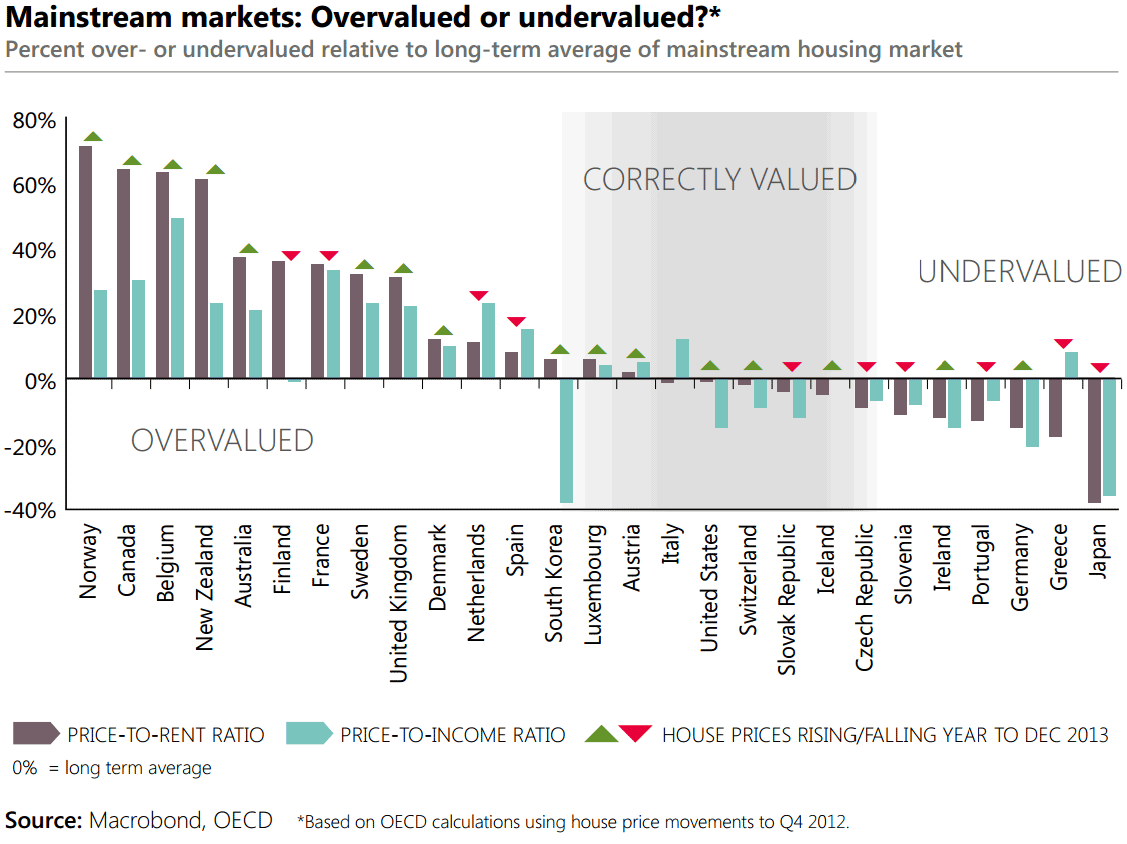Australian residential housing overpriced: Knight Frank

Australia sits firmly in the property overvalued basket, according to the latest Knight Frank international residential property report.
Not as overpriced as Norway and Canada.
The Knight Frank Global Opportunities report compared mainstream housing markets across 27 countries, assessing how prices are performing in relation to rents and incomes.
Australian homes ranked fifth among the world's most ''overvalued'' housing markets.
Knight Frank suggest a property market was correctly valued when local incomes are enough to buy or rent an average property.
The axis at 0 represents a position where a market is valued in line with its long-term average.
A column above the line shows there is an imbalance with house prices surging ahead of rents or incomes.
A column close to the line suggests the market is balanced, and displaying a sustainable level of growth.
A column below the line signals the market is undervalued with rental and/or income growth outpacing house prices.
At present, 15 of the 27 countries Knight Frank tracked are above their long-term average both in terms of price-to-rent as well as price-to-income ratios, the Knight Frank international residential researcher Kate Everett-Allen said.
"Interestingly, if the same exercise had been carried out at the height of the financial crisis in 2008 more than 20 countries would have been in this bracket," she noted.
Those markets in which prices and rents look to be balanced include the United States, Italy, Austria, Iceland and Luxembourg.
Countries such as Greece, Spain, and Portugal where prices are still falling are likely to end up on the right of the chart as the gaps between the respective indicators narrow.
Germany and Japan, having missed out on the double-digit price growth observed in many developed economies in the early 2000’s remain firmly in the ‘undervalued’ camp.
Belgium, Norway and Canada, where prices are still rising, represent those countries most at risk of a price correction, particularly if mortgage rates increase or incomes start
"With the global economy displaying green shoots, buyers – both in mainstream housing markets and second home hotspots – are looking closely at which markets offer real value," the Knight Frank international residential researcher Kate Everett-Allen said.
“The upturn in the global economy, albeit gradual, has meant for some home ownership, or even the acquisition of a second home, is back on the agenda again for the first time since 2008.”
Already in 2014 there has been a steady stream of positive indicators for global housing markets, she noted.
Lending criteria is being relaxed, interest rates in Europe, the US and the UK look set to remain at historical lows at least until 2015, employment is picking up and buyer confidence is strengthening.
"This upturn in the global economy, albeit gradual, has meant for some home ownership, or even the acquisition of a second home, is back on the agenda again for the first time since 2008 across Europe and the Caribbean.
"From currency fluctuations to purchase costs, from tax hikes to oversupplied markets; we look at the potential risks (upside and downside) that deserve close consideration," she added.
